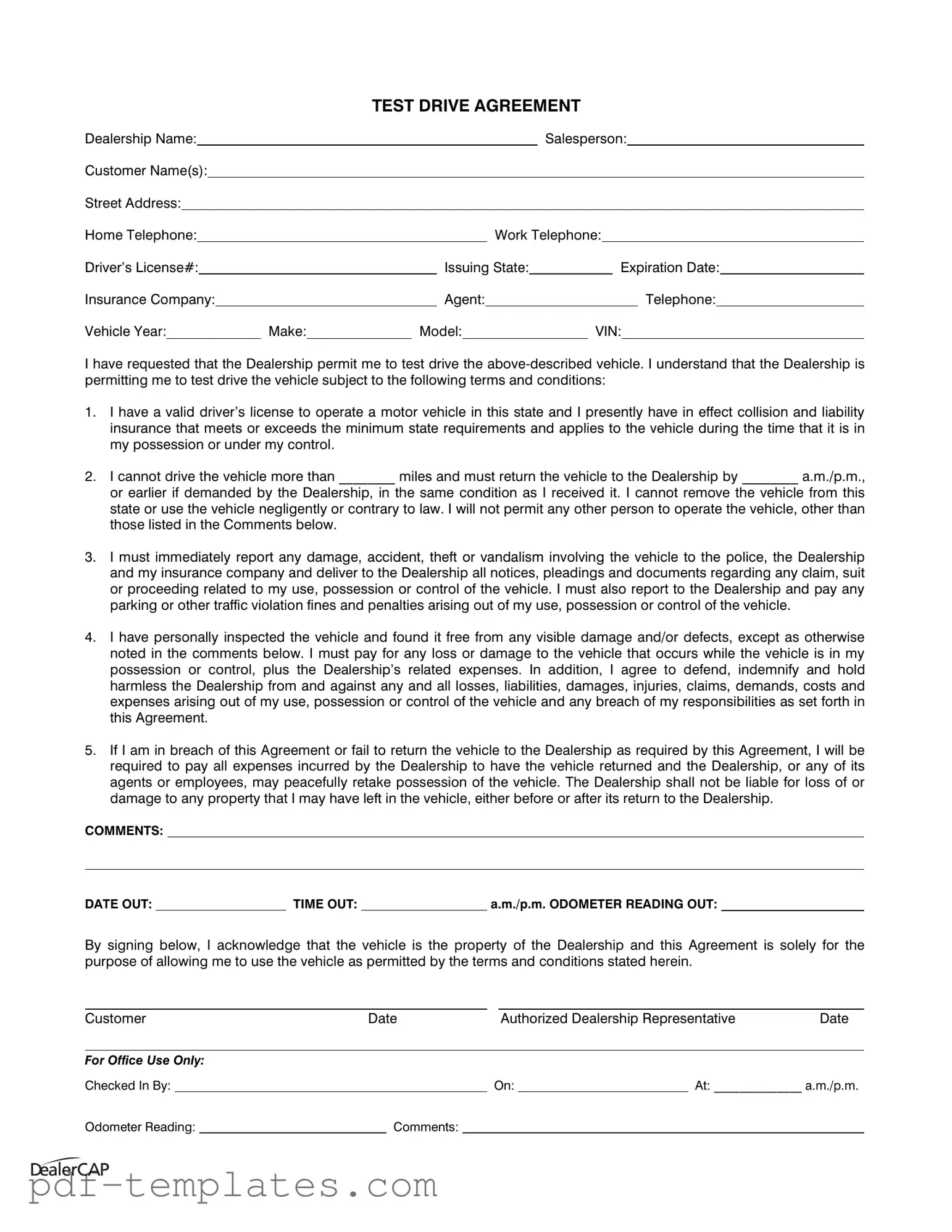The Test Drive form serves as a critical document in the car buying process, establishing a clear understanding between the dealership and the customer regarding the terms of a vehicle test drive. It collects essential information about both parties, including the dealership's name, the salesperson involved, and the customer's details such as their name, address, and contact numbers. This form also requires the customer to provide their driver's license information, including the issuing state and expiration date, as well as details about their insurance coverage. The vehicle being tested is specified by its year, make, model, and Vehicle Identification Number (VIN). The agreement outlines specific responsibilities that the customer must adhere to during the test drive, such as maintaining valid insurance, adhering to mileage limits, and returning the vehicle in the same condition it was received. Additionally, it emphasizes the importance of reporting any incidents, damages, or violations that may occur while the customer is in possession of the vehicle. By signing the form, the customer acknowledges their understanding of these terms and agrees to indemnify the dealership against any liabilities arising from their use of the vehicle. This document not only protects the dealership's interests but also ensures that customers are aware of their obligations, fostering a responsible and informed test-driving experience.
